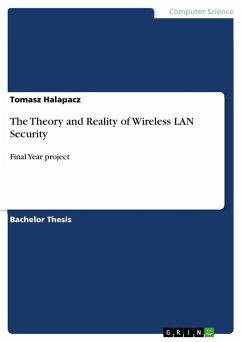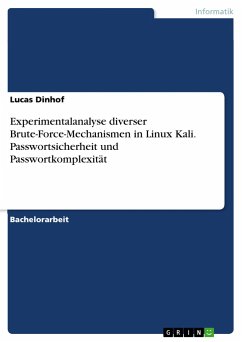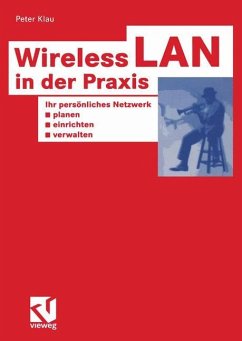
The Theory and Reality of Wireless LAN Security
Final Year project

PAYBACK Punkte
0 °P sammeln!
Bachelor Thesis from the year 2011 in the subject Computer Science - IT-Security, grade: 72%, University of Southampton (Technology), course: Computer Systems and Networks, language: English, abstract: This paper addresses the theory and reality of Wireless LAN security. It provides an overview of security mechanisms and explains how security works in Wireless LAN networks. An in depth analysis of the Wired Equivalent Privacy (WEP), Wi-Fi protected access (WPA) and WPA2 standards is presented. The security vulnerabilities that exist in them are analysed and explained. In the investigation, a w...
Bachelor Thesis from the year 2011 in the subject Computer Science - IT-Security, grade: 72%, University of Southampton (Technology), course: Computer Systems and Networks, language: English, abstract: This paper addresses the theory and reality of Wireless LAN security. It provides an overview of security mechanisms and explains how security works in Wireless LAN networks. An in depth analysis of the Wired Equivalent Privacy (WEP), Wi-Fi protected access (WPA) and WPA2 standards is presented. The security vulnerabilities that exist in them are analysed and explained. In the investigation, a wardriving approach is used. It is observed that about 30% of all WLANs detected during network discovery experiment operate with WEP encryption witch further investigated is proved that can be compromised with 100% success. The author discusses the potential consequences that arise from using a weak encryption. Experimental results of penetrating WPA secured network illustrate how easy it is to protect from dictionary attacks by simply using a combination of strong encryption protocol and complex key. The results of the practical part of the project are used to generate guideline in terms of choosing the right encryption method.













